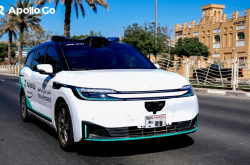Surviving the Tariff War: GM's Strategy in North America and China - A Deep Dive into Q1 2025 Financial Report
![]() 05/12 2025
05/12 2025
![]() 430
430
Recently, General Motors (GM) released its Q1 2025 financial report, shedding light on the auto industry's resilience amidst tariff wars, market strategies in North America and China, and future directions in electrification and intelligence. This article consolidates key insights from GM's Q1 2025 financial report and related news, exploring:
- Financial performance under tariff pressures
- Geopolitical response through the "Buy Where We Build" policy
- Market strategies in the US and China
- Advancements in electrification, intelligent assisted driving, and AI applications
Financial Report: A Money-Making Machine Under Pressure
Revenue and Financial Data
- Total Revenue: $44 billion, a 2% year-on-year increase
- Adjusted EBIT (Earnings Before Interest and Taxes - Adjusted): $3.5 billion, down approximately 10% year-on-year due to cost pressures and foreign exchange fluctuations
According to data from the China Automobile Dealers Association, China's passenger vehicle retail sales in Q1 2025 amounted to 5.12 million units, with a total revenue of approximately $120.7 billion. GM's quarterly revenue exceeds one-third of this total, indicating its robust profitability. However, GM's US market share remains less than one-fifth, underscoring the US's unmatched consumption capacity.
Automotive Business Cash Flow: $800 million, down 27% year-on-year due to reduced dealer inventory.
Sales and Market Share Data
- Total Sales: 912,000 units, including 827,000 units in the US and 85,000 units in GM's international business
- US Market Share: 17.2%, up 1.8 percentage points year-on-year, the highest since 2019
Inventory Management: Dealer inventory decreased by 8% to 549,000 units, with nearly 90% being 2025 model year vehicles, showcasing efficient turnover.
Despite Trump's "reciprocal tariffs" not yet impacting the first quarter, GM CEO Mary Barra noted that US tariff policies could affect GM's EBIT by $4 billion to $5 billion. As a result, GM's adjusted EBIT guidance for 2025 is $10 billion to $12.5 billion, lower than the 2024 guidance of $14 billion to $15 billion.
"Buy Where We Build" Policy in Response to Geopolitics
Trump's "reciprocal tariffs" will significantly impact the auto industry due to its complex and long-cycle supply chains. GM is preparing for a $5 billion loss in 2025 from tariffs on vehicles imported from Korea and Mexico/Canada. To mitigate this, GM adopted the "Buy Where We Build" policy, focusing on localized production and procurement.
- Increased annual production of full-size pickup trucks at the Fort Wayne, Indiana plant by 50,000 units
- Expanded US electric vehicle battery module production
- Since 2019, direct procurement in the US for North American production has increased by 27%
Additionally, GM expects vehicle pricing in North America to increase by 0.5%-1% in 2025 and aims to share tariff impacts with suppliers through transparent cooperation.
Strengthening Dominance in the US, Bleeding and Transforming in China
US Market Remains Robust
- Strong sales of full-size SUVs and pickup trucks
- EV sales increased by 94% year-on-year, with a market share of 10.4%
- Over 80% of vehicles produced in North America meet USMCA standards
Changes in the Chinese Market
- GM's joint ventures in China began turning profitable, with GM earning $50 million in equity income
- New energy vehicle (NEV) sales increased by 53% year-on-year
- SAIC-GM launched the Buick Electra sub-brand, focusing on high-end NEVs
These changes were achieved through operational cost reduction measures and strategic adjustments, such as closing idle capacity and consolidating dealer systems.
Conservative and Gradual Progress in Electrification and Intelligent Assisted Driving
GM's electrification strategy matches the slowdown in the US EV industry, focusing on high-margin models and cost control. GM is collaborating with LG Energy Solution to recover Ultium battery factory investments and promoting localized procurement of key materials.
In autonomous driving and AI technology, GM and NVIDIA are cooperating on the next generation of vehicles, factories, and robots. GM has recruited Barak Turovsky, former Cisco VP of Artificial Intelligence, as its Chief AI Officer.
GM's intelligent assisted driving technologies include Super Cruise and Cruise. Super Cruise focuses on increasing the user base, while Cruise is focused on integration and development of L3 and above autonomous driving technologies.
Closing Remarks
GM's Q1 2025 financial report highlights its strong market execution and strategic resilience, with increased market share in the US and progress in the EV business. However, it faces cost pressures and policy uncertainties. To consolidate its advantages, GM must lead in technology and supply chain localization. For SAIC, GM's North American operations may not offer significant technology transfer or reverse sales opportunities.
Reference materials:
- GM Q1 2025 Financial Report (PPT format)
- Associated images





